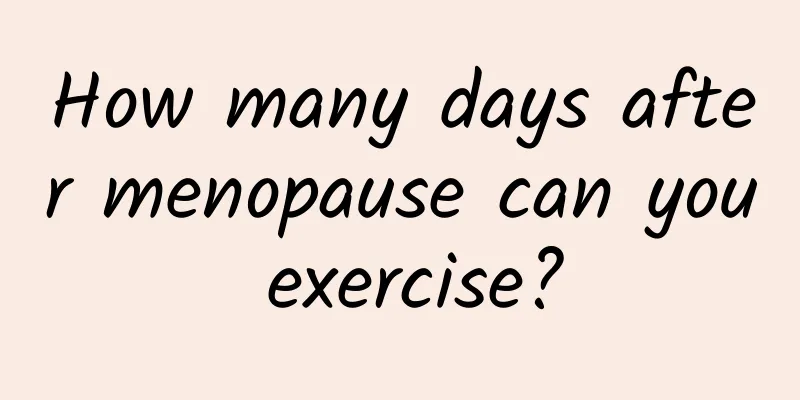How many days after menopause can you exercise?

|
It is usually recommended to observe your physical condition after menopause. After confirming that there is no obvious discomfort, you can do moderate exercise, but avoid strenuous exercise. Generally, you can gradually resume light exercise 3-5 days after menopause, especially for those with mild menstrual symptoms or regular cycles, the recovery speed may be faster. The exercise arrangement after amenorrhea needs to be determined in combination with personal constitution, menstrual experience and overall health status. If you have severe abdominal pain, dizziness or physical weakness during amenorrhea, it is recommended to get enough rest and adjust to ensure that your body recovers completely. If the symptoms are mild and you are in good health, you can start with low-intensity exercise such as yoga and walking, and gradually transition to moderate-intensity strength training or running, but avoid high-intensity explosive exercise such as jumping training to avoid aggravating pelvic congestion or causing other complications. If amenorrhea is a long-term phenomenon or is accompanied by sudden changes in weight, mood swings, etc., potential endocrine problems should be considered and medical treatment should be sought in time. The exercise arrangement after amenorrhea needs to be determined in combination with personal constitution, menstrual experience and overall health status. If you have severe abdominal pain, dizziness or physical weakness during amenorrhea, it is recommended to get enough rest and adjust to ensure that your body recovers completely. If the symptoms are mild and you are in good health, you can start with low-intensity exercise such as yoga and walking, and gradually transition to moderate-intensity strength training or running, but avoid high-intensity explosive exercise such as jumping training to avoid aggravating pelvic congestion or causing other complications. If amenorrhea is a long-term phenomenon or is accompanied by sudden changes in weight, mood swings, etc., potential endocrine problems should be considered and medical treatment should be sought in time. When resuming exercise, you should pay attention to maintaining adequate water intake, avoid exercising on an empty stomach, and choose sportswear with good breathability to improve comfort. If you experience menstrual abnormalities, fatigue, or severe pain after resuming exercise, you should stop exercising and consult a professional doctor. 7-10 days after the menstrual period, this is the follicular phase, and physical strength recovers faster. At this time, gradually increasing the intensity of exercise is more helpful to improve the body's metabolism and health level. |
<<: What are the symptoms of postmenopausal cervical adhesions?
>>: What tests should be done to find out the causes of threatened miscarriage?
Recommend
How to cure female cervical erosion? Introduction of three methods to cure cervical erosion
Cervical erosion is a common gynecological diseas...
6 warming spices to burn fat and lose weight
As the temperature drops in autumn and winter, th...
What are the most accurate methods for diagnosing vulvar leukoplakia?
The incidence of vulvar leukoplakia is very high ...
Liu Yifei's weight loss method in "The Story of Rose" has become popular on Xiaohongshu! Doctor: Adding "this cup" will be more effective
Actress Liu Yifei won the second place in the dis...
Analysis of four common methods of treating pelvic inflammatory disease
There are many different opinions on the treatmen...
Several common causes of cervical erosion
Although cervical erosion is a common gynecologic...
What can you eat to treat dysmenorrhea? 4 kinds of food have the effect
Dysmenorrhea is a gynecological symptom. Due to t...
Women can eat these foods to supplement collagen after menstruation and look younger
Women have their menstruation every month, and th...
What are the symptoms of irregular menstruation in women?
What are the symptoms of irregular menstruation? ...
What are the specialized hospitals for congenital absence of vagina?
What dietary restrictions do female patients with...
Testing for bacterial vaginosis varies by type
Bacterial vaginosis is a common gynecological inf...
How does an ectopic pregnancy occur?
Ectopic pregnancy is mainly caused by the fertili...
What can I eat to eliminate uterine fibroids? After physical exercise, the uterine fibroids disappeared.
What to eat to eliminate uterine fibroids Uterine...
Super foul goddess! Korean supermodel Han Hye-jin's two secrets to body shaping
Han Hye-jin, a well-known Korean model, is known ...
How can women recover faster after abortion? Four nursing principles for women after abortion
How can women recover faster after an abortion? A...









